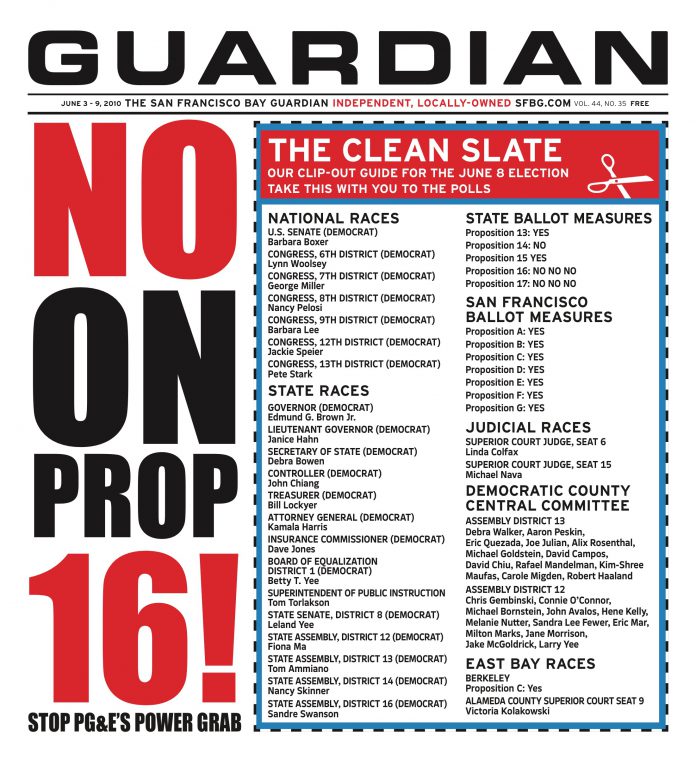By Richard Winger
OPINION Proposition 14, a June 8 ballot measure, would mandate that all candidates for Congress and state office appear on the same June ballot, and that all voters use that ballot. Only the two candidates who got the highest vote totals could run in November. Even write-ins would be banned in November for Congress and state offices.
Prop. 14 also has a hidden zinger in it that would remove the Peace and Freedom and Libertarian parties from the ballot. But so far only one daily newspaper has mentioned it — the San Francisco Chronicle, in a March 11 story by Wyatt Buchanan. The state ballot pamphlet says nothing about this particularly nasty detail of Prop. 14.
California has six recognized political parties: Democratic, Republican, American Independent, Green, Libertarian, and Peace and Freedom. The parties remain ballot-qualified either by polling 2 percent of the vote for any statewide race in a midterm year (all parties get a free ride in presidential years) or by maintaining registration equal to 1 percent of the last gubernatorial vote.
In practice, it’s far easier for the smaller parties to meet the first test. The Peace and Freedom Party has 58,000 registered members, and the Libertarian Party has 85,000 registered members. But these parties always meet the 2 percent vote test. Minor parties typically draw far more votes than they have registered members.
The problem is that Prop. 14 eliminates, in practice, the 2 percent vote test. Under Prop. 14, no party officially has any nominees for any office except president and vice-president. And since minor party candidates almost never place first or second in the June primary, minor party members would never be able to run for statewide office in November. And, the catch is that only the November vote counts for meeting the 2 percent vote test.
Prop. 14 also says that members of unqualified parties will not be permitted to list their party label on the June ballot.
The real irony is that the big newspapers of California know about this problem with Prop. 14 but refuse to mention it. That’s ironic because back in 1981, when Democrats in the Legislature wanted to toughen the ballot-access requirements, the big newspapers of California denounced that bill with full fury. Forty of California’s biggest newspapers, TV stations, and radio stations editorialized against that measure.
This year the Los Angeles Times (which led the charge for minor-party access in 1981) refused to mention that Prop. 14 has the same characteristic as that bill, only worse. The Times has rejected at least 10 op-eds submitted by various individuals in the last year that mentioned this problem. None of the Los Angeles Times stories about Prop. 14 have mentioned it. None of the political columnists for that newspaper have mentioned it.
Prop. 14 is supported by the Chamber of Commerce, the for-profit health insurance companies, the for-profit hospitals, and various multimillionaires, and the Yes on 14 campaign has a huge war chest. Why won’t the L.A. Times even mention this flaw in the measure? Who are the big dailies afraid of offending?
Richard Winger is the editor of Ballot Access News.

